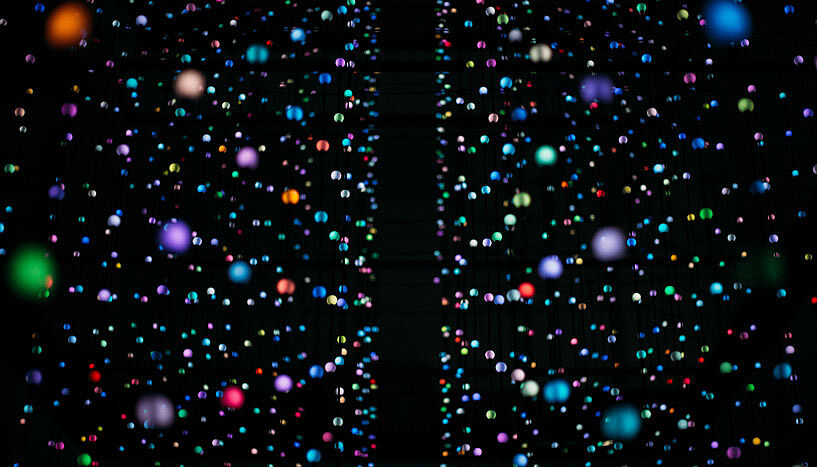One step closer to complex quantum teleportation
02. November 2018Novel complex quantum entanglement generated in the laboratory for the first time
For future technologies such as quantum computers and quantum encryption, the experimental mastery of complex quantum systems is inevitable. Scientists from the University of Vienna and the Austrian Academy of Sciences have succeeded in making another leap. While physicists around the world are trying to increase the number of two-dimensional systems, so-called qubits, researchers around Anton Zeilinger are breaking new ground. They pursue the idea to use more complex quantum systems as qubits and thus can increase the information capacity with the same number of particles. The developed methods and technologies could in the future enable the teleportation of complex quantum systems. The results of their work "Experimental Greenberger-Horne-Zeilinger Entanglement Beyond QuBits" is published recently in the renowned journal "Nature Photonics".
Similar to bits in conventional computers, QuBits are the smallest unit of information in quantum systems. Big companies like Google and IBM are competing with research institutes around the world to produce an increasing number of entangled QuBits. The clear motivation is to develop a functioning quantum computer. A research group at the University of Vienna and the Austrian Academy of Sciences, however, is pursuing a new path to increase the information capacity of complex quantum systems.
The idea behind it is simple: instead of just increasing the number of particles involved, the complexity of each system is increased. "The special thing about our experiment is that for the first time it entangles three photons beyond the conventional two-dimensional nature," explains Manuel Erhard, first author of the study. For this purpose, the Viennese physicists use quantum systems which have more than two possible states - in this particular case, the angular momentum of individual light particles. These individual photons now have a higher information capacity than QuBits. However, the entanglement of these light particles turned out to be difficult on a conceptual level. The researchers overcame this challenge with a ground-breaking idea: a computer algorithm that autonomously searches for an experimental implementation.
With the help of the computer algorithm Melvin an experimental setup to produce this type of entanglement has been uncovered. At first this was still very complex, but at least it worked in principle. After some simplifications, physicists still faced major technological challenges. The team was able to solve these with state-of-the-art laser technology and a specially developed multi-port. "This multi-port is the heart of our experiment and combines the three photons so that they are entangled in three dimensions," explains Manuel Erhard.
The peculiar property of the three-photon entanglement in three dimensions allows for experimental investigation of new fundamental questions about the behaviour of quantum systems. In addition, the results of this work could also have a significant impact on future technologies, such as quantum teleportation. "I think the methods and technologies that we developed in this publication allow us to teleport a higher proportion of the total quantum information of a single photon, which could be important for quantum communication networks," Anton Zeilinger points out into the future of possible applications.
Publication in Nature Photonics:
"Experimental Greenberger-Horne-Zeilinger Entanglement Beyond QuBits", Manuel Erhard, Mehul Malik, Mario Krenn & Anton Zeilinger.
https://doi.org/10.1038/s41566-018-0257-6
Wissenschaftlicher Kontakt
Manuel Erhard, BSc MSc
Quantenoptik, Quantennanophysik und QuanteninformationUniversität Wien
1090 - Wien, Boltzmanngasse 5
+43-1-4277-295 68
manuel.erhard@univie.ac.at
Rückfragehinweis
Stephan Brodicky
Pressebüro der Universität WienUniversität Wien
1010 - Wien, Universitätsring 1
+43-1-4277-175 41
+43-664-60277-175 41
stephan.brodicky@univie.ac.at
Dipl.-Soz. Sven Hartwig
Leitung Öffentlichkeit & KommunikationÖsterreichische Akademie der Wissenschaften
1010 - Wien, Dr. Ignaz Seipel-Platz 2
+43 1 51581-13 31
sven.hartwig@oeaw.ac.at

